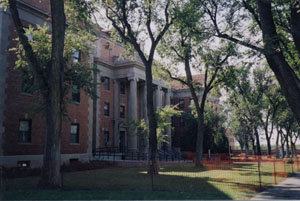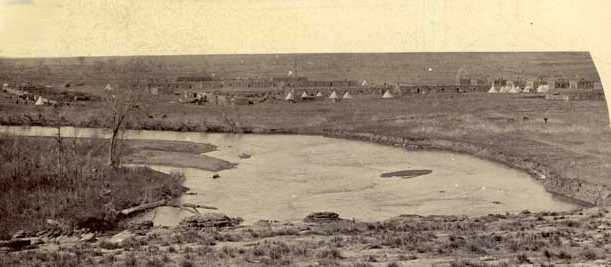National and State Register
Fort Lyon
Bent County
Fort Lyon is important for its role as an army post, a navy hospital, and a veterans’ hospital. Beginning in 1867, the fort served as part of the army’s Department of the Missouri, a regional network of forts and military facilities in the Missouri River drainage.
The navy took control of the fort in 1906, adapting and greatly expanding the army post to serve a medical facility. The hospital provided tubercular care to sailors and marines until 1922, with all funding for operations and construction obtained through appropriations from the Department of the Navy. The navy pursued a policy of self-sufficiency for the institution, which is reflected by the development of the associated agricultural fields, irrigation system and support structures. In 1922 the Veterans’ Bureau, later the Veterans’ Administration, assumed control of the facility, expanded the hospital complex, and opened its services to all active and retired personnel and their families in all branches of the military service.
Fort Lyon is important in Colorado ethnic heritage. First, the property is important for its association with Native Americans during the earliest period of the fort’s operation beginning in 1868. Second, the property is significant for its association with African Americans, specifically the all-black Buffalo Soldiers of the 10th Cavalry stationed at Fort Lyon in the late 1860s and 1870s. Third, the property is significant for its association with those of European origins, specifically as the fort was used to treat World War I German naval prisoners suffering from tuberculosis.
Finally, Fort Lyon is architecturally significant for its set of standardized VA hospital buildings. Constructed during the period 1929 through 1945, these building types are best expressed in the group of multi-story Georgian Rival style, brick buildings adjacent to the parade ground. The property is associated with the Historic Resources of the Santa Fe Trail, 1821-1880 Multiple Property Submission.



